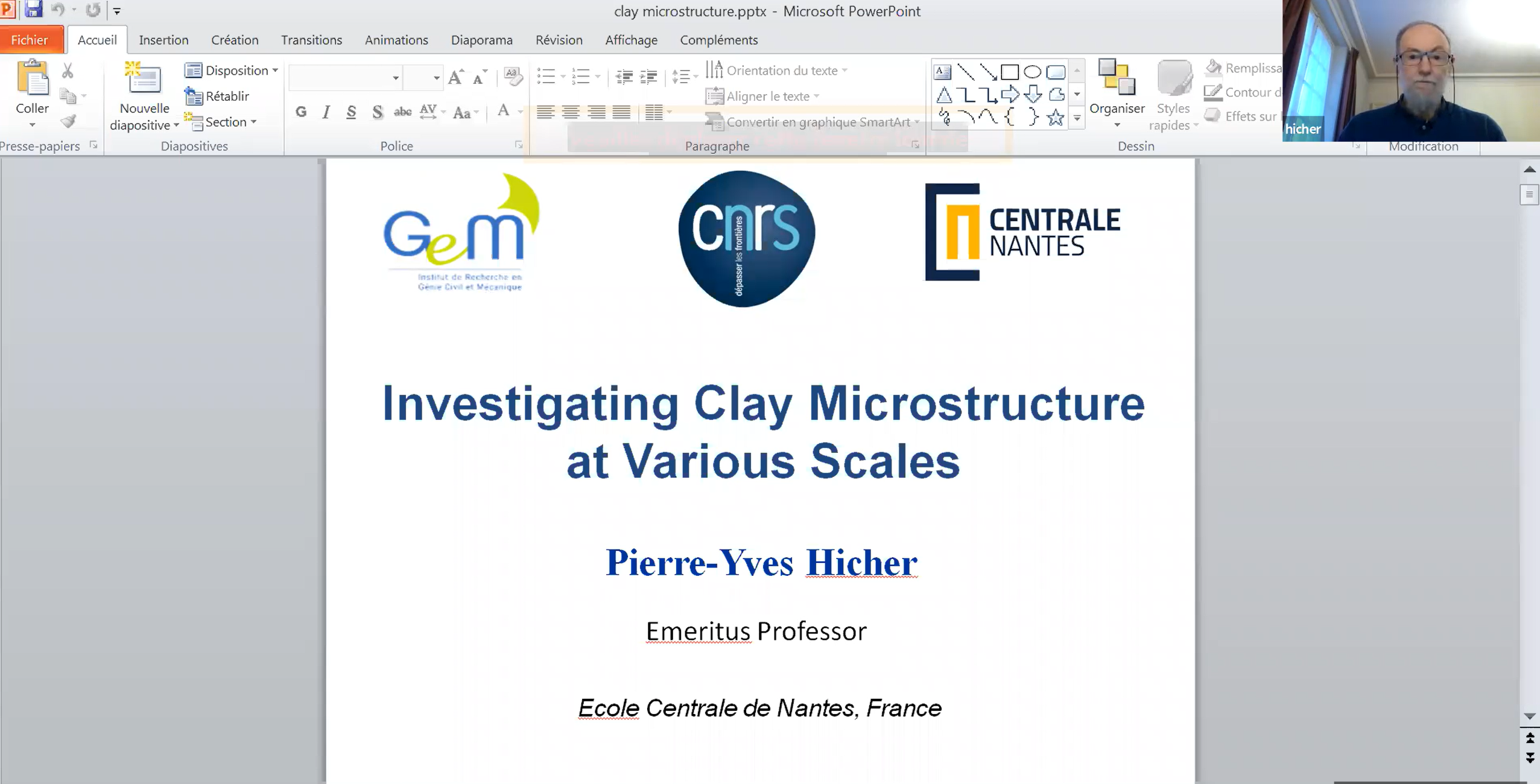Updated: February 22, 2022
It's our great honor to invite prof. Hicher to give us a talk about "Investigating clay microstructure at various scales".
Biography: Prof. Pierre-Yves Hicher is currently Emeritus Professor at Ecole Centrale de Nantes and former Director of the Regional Institute for Research in Civil Engineering and Construction, after having served as Director of the Research Institute in Civil and Mechanical Engineering. UMR CNRS-Ecole Centrale Nantes-University of Nantes. His principal research activity and publications lie in the field of the mechanical behaviour of soils and granular materials, where major contributions to developing methodology for connecting macroscopic properties to the micro structure of heterogeneous materials can be found. He has also contributed to the knowledge of material properties under complex loading paths by developing onginal experimental procedures and parameter identification methods under inverse analysis techniques. Recently, he has proposed homogenization techniques adapted to disordered granular materials in the modelling of their mechanical behaviour. They are applied to the analysis of instability and collapse in granular materials, to the size effect in coarse granular materials and its application to rockfill dams, as well as to the impact of intemal erosion on the stability of hydraulic works (dams, dykes, levees). He is the author and co-author of more than 120 papers in international journals and has published several books on his research topics. He has supervised 45 PhD theses.
Abstract: Clay minerals belong to the family of aluminosilicate and encompass a wide range of chemical compositions and structures. Clay minerals have a layered structure. Depending on the charge density and the nature of the counter ions, the interlayer cations can be hydrated in the presence of water, resulting in an increase in the interlayer distance, and or be exchanged by other cations. Clayey soils are a notable example of porous media. Relevant scales for microstructural investigations range from hundreds of micrometers to fly nanometers. Scanning Electron Microscopy (SEM) can be used to analyze the clay microstructure at the level of particles while Transmission Electron Microscopy (TEM) can provide information at the level of individual clay layers. Mercury injection porosimetry(MIP) provides information about pore-throat size and pore connectivity. Because none of the methods can cover both representative area and volume at relevant resolutions. different methods are combined to characterize fully the porosity and mineral fabrics of the clays. An overview of recent technical and conceptual developments of microstructural investigations applied to clayey materials will be presented. The evolution of the clay structure at different scales of observation will be examined in relation with the mechanical behavior of clayey materials subjected to different stress and strain loadings by connecting structural and mechanical anisotropy.
